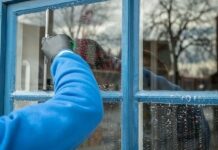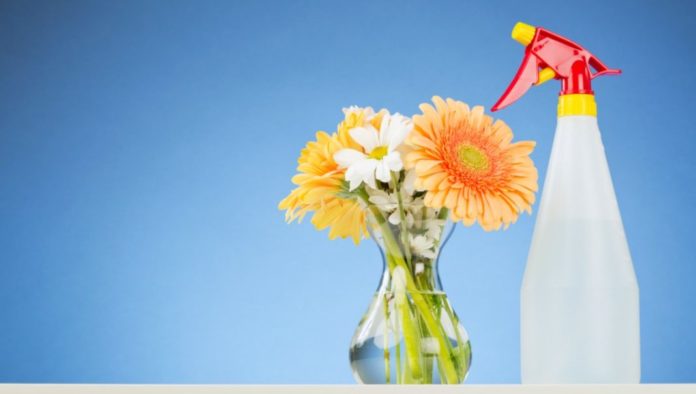
Unfortunately, a lot of commercial cleaning products contain hazardous chemicals. Some of these may cause respiratory problems and skin irritations, while also polluting the air inside your home. If these things are big problems for you, why not use a homemade, natural disinfectant? You can use vinegar, rubbing alcohol and essential oils, as they eliminate exposure to chemicals while keeping the home as clean as ever. You can find a guide on essential oil brands at civilizedhealth.com along with their uses.
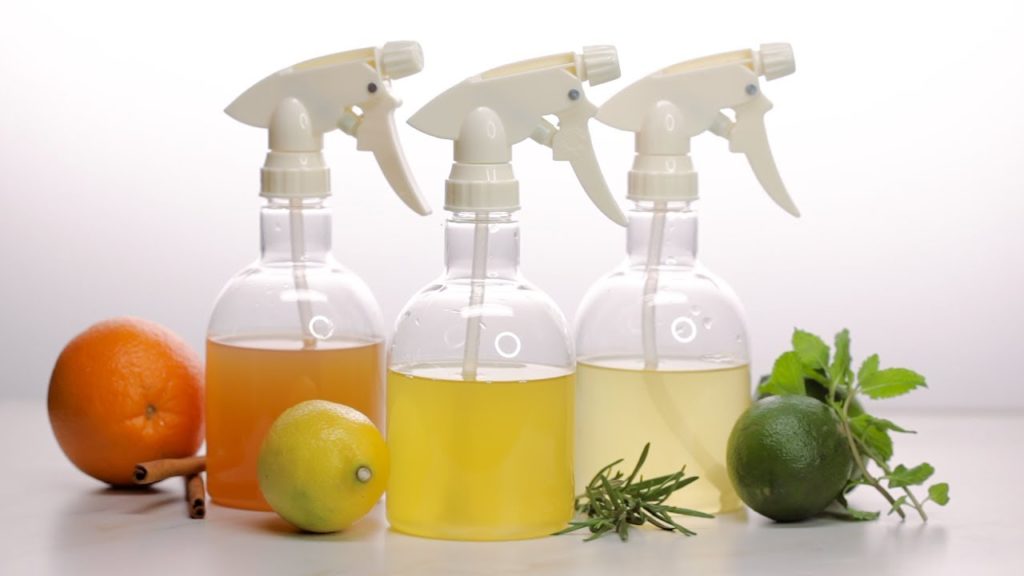
Vinegar-Based Disinfectants
1. A basic vinegar-based spray.
Taka a standard-sized glass spray bottle. Add 1 part water, 1 part vinegar and 5-15 drops of 100% essential oil of choice. The room will smell like it so choose a favorite. Lemon is used in kitchens, tea tree and eucalyptus are for bathrooms, while milder oils like chamomile and vanilla are perfect for other rooms where you spend most of your time.
2. Disinfectant wipes
If disinfectant wipes are what you want instead of a spray, do the same, except in a large glass jar and mix them. Cut 15-20 pieces of 10-inch (25.4 cm) square cloth and put them in. Press down so that they absorb the liquid. Place a lid on top and store away. Before using, wring a wipe to release excess cleaner.
3. Vinegar and baking soda spray
Take a clean bowl or a bucket. Add 4 cups, or 946.35 ml of hot water, ¼ cup or 59.14 ml of white vinegar, and 2 tablespoons or 29.57 ml of baking soda. Mix everything well until the baking soda dissolves. Squeeze half a lemon into the mixture. Drop both sides of the lemon in as well and wait for it to cool. When it is cool, add 4 drops of lemon essential oil or, whichever you prefer. Strain the mixture through a sieve to remove lemon pulp, seeds or rind, and fill up a spray bottle.
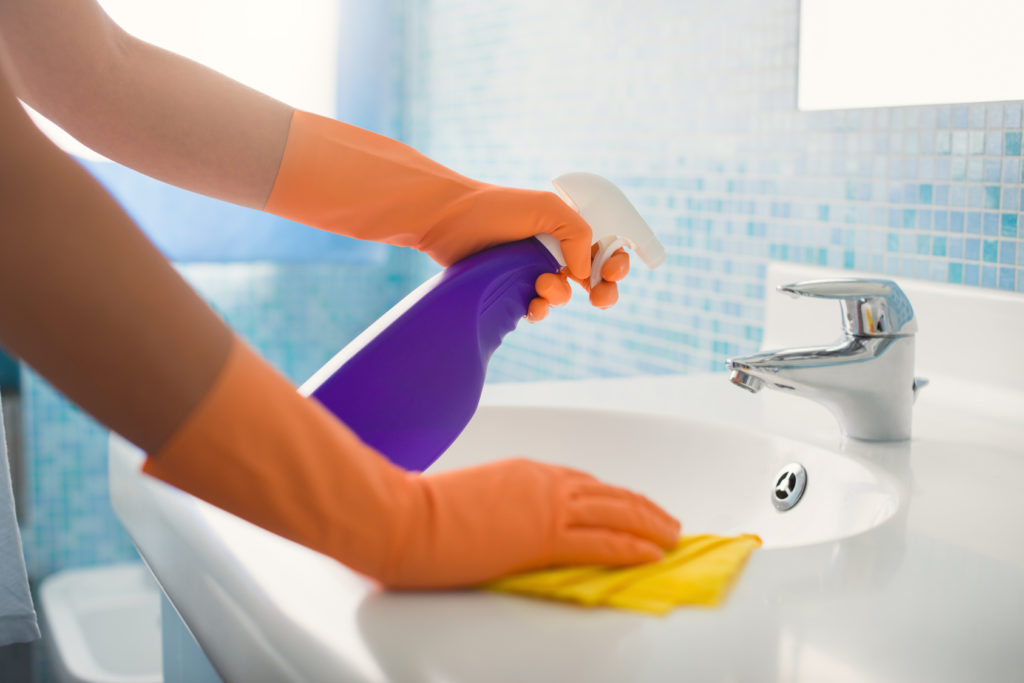
Vodka-Based Disinfectants
1. Basic vodka-based spray
Add half a cup, or 118.29 ml of vodka, another half of water, and around 50 drops of the essential oil of your choosing in a measuring cup. Mix and pour into a glass spray bottle. Always shake the bottle before using the spray. Use 100% essential oils instead of Therapeutic Grade oils, which can only contain 5% oil.
2. Vodka-based spray with baking soda
Mix 1 cup (236.58 ml) of water and a quarter of a cup (59.14 ml) of washing soda or baking soda in a large measuring cup. Stir until the soda dissolves, and add half a cup of vodka and 25 drops of essential oils of choice. Stir until it is well mixed, and pour into a glass spray bottle. The baking soda is a crucial part that helps you clean disinfect surfaces.
3. Vinegar and baking soda spray
Baking soda is very useful when it comes to cleaning, TheHealthyCuisine listed 13 Ways To Clean Your Home With Baking Soda. Take a clean bowl or a bucket. Combine half a cup of white vinegar, another half of vodka, 1 and a half cups (354.88 ml) of water, and 20 drops of oil in a measuring cup. Mix and pour into a glass spray bottle.
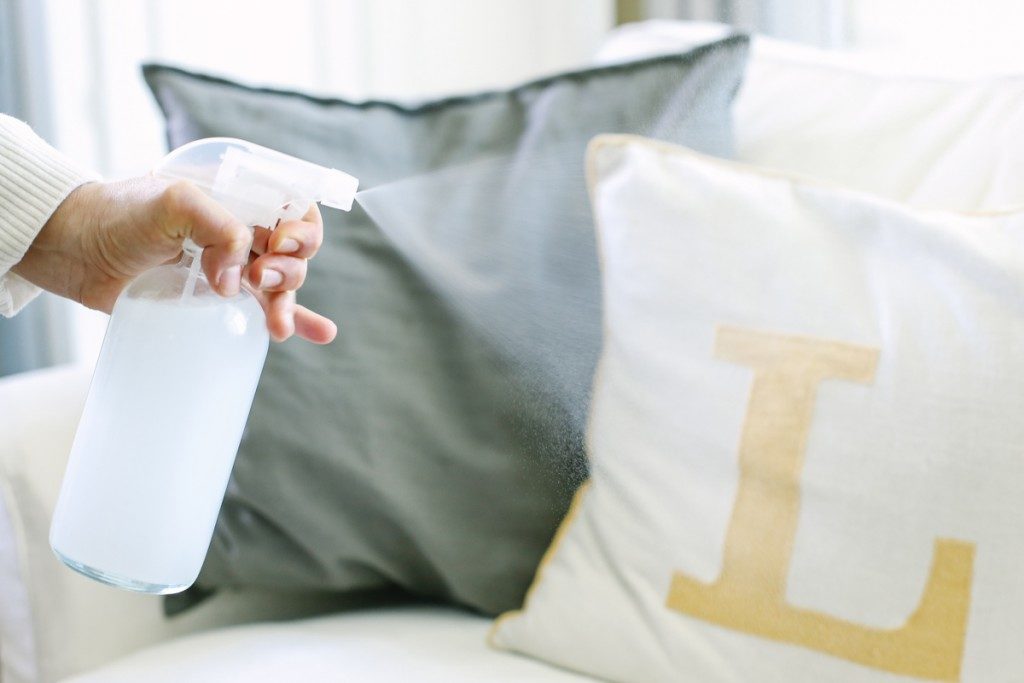
Rubbing Alcohol and Hydrogen Peroxide-Based Disinfectants
1. Make a basic rubbing alcohol spray
Add one part water and one part rubbing alcohol in a spray bottle. Shake to mix up. Rubbing alcohol is very effective as a disinfectant and is often used to clean medical devices.
2. Herbal rubbing alcohol spray
Pour between 10 and 30 drops of thyme, or other essential oil into an 8- ounce or 236.58 ml glass spray bottle. Add 1 ounce or 29.57 ml of rubbing alcohol, fill up the spray bottle with water to the top. Shake to mix and store away.
3. Vinegar and hydrogen peroxide combination
Although vinegar and hydrogen peroxide work well together and disinfect, never combine them in a single container. This is because they create peracetic acid that can be hazardous. Instead of this, put undiluted white vinegar in one spray bottle, and 3% hydrogen peroxide in another. When using, clean a surface and then spray with one mixture. Let it sit for around 5 minutes, wipe with a clean piece of cloth, and spray with the other. Again, leave for five minutes and clean with another clean cloth. The order of the mixtures does not matter.

Using the Disinfectant Spray
Clean the desired surface. Disinfecting does not clean or remove dirt and other buildups. It is important to first clean it before disinfecting. Use a natural or organic cleaner to avoid any harsh chemicals.
Shake the spray thoroughly so that all ingredients are mixed well for maximum efficiency. Spray the surface thoroughly, and make sure to hold the bottle at arm’s length from the surface. Let it sit for around 10 minutes so that it can eliminate all of the germs. Wipe with a clean microfiber cloth. Use a separate cloth for each room and surface to avoid contamination.


